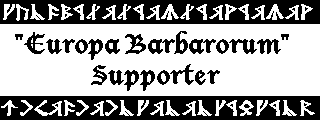I was getting a little bored playing as Romans (it was getting too easy, especially as I don't like the higher difficulty giving stats boosts), but then joined the Carthaginian PBM and later helped my son out as Parthians. I was surprised at what a good job CA has done with giving these armies a different "feel" in battle from the Romans.
The Romans can get by comfortably on massed pila and sword armed heavy infantry. Their supports - esp. archers, dogs and cav - are perhaps ahistorically strong, but they are really not needed. Even vanilla hastati can handle most comers from the AI. I kind of expected this, coming from MTW - ie that the Romans would be like the Almohads relying on their well-armoured swordsmen (AUM), but it is well implemented. For example, you have to fight clever against a phalanx and cannot expect to simply defeat it head-on. I especially like the pila - it's pretty powerful when the troops are stationary, set to fire at will and have even been surprised by the AI biting me back with it a few times. I've even come to like velites - especially as Brutii vs the Greeks! - whereas I regarded javelin skirmishers as nuisance units in MTW.
Playing the Carthaginians on hard, I started to realise what people had been saying about cavalry in RTW being powerful. The Iberian infantry seemed pathetic (on hard) and while Balearic slingers are powerful, the lack of other ranged support meant I had to turn to cavalry (as recommended in the org guides thread on Carthage). Occasionally, I would use a unit of elephants but did not want to overdo it. Relying on melee cavalry made for a very fun campaign - you have to micromanage a lot more, as you need to use your maneouvrability to isolate portions of the enemy line, flank it and ideally hit it from behind, ideally when it is wavering. Great fun - and not a million miles from what I understood the Carthaginians tried to do against the Romans.
The Parthians were also an eye-opener. I had not read Doug Thomson's guide on horse archers, but having done so afterwards, I can see why he was so excited by them. Facing large Egyptian armies - massed archers/desert cav, chariots, iron-skinned axemen etc - I thought my son's virtually all-cav Parthians would be doomed. But they were startingly effective, if chaotic - we had them whirling around in a dozen or so Cantabrian circles, coming in from all angles, with the enemy virtually unable to touch us. The cataphracts were surprisingly vulnerable (given their impressive stats), but then I found that in MTW with knights too, and so kept them as a shock reserve. Again, good fun and not too bad a way of capturing the flavour of Parthian tactics.
Of course, both the Carthaginians and Parthians probably suffer in sieges - thanks to a spy, I blithely marched an army through an enemy gate and was appalled to see it virtually all barbecued by the flaming oil!
I've yet to try the Greek/Macedon phalanx heavy armies, but have heard they are very powerful against the AI.
And I'm not sure how the barbarians play out, but I quite admire the way the AI fields the Gauls, lining them up, getting them worked up with war chants and then running head long at your lines. However, I imagine a player may be tempted to be rely ahistorically on archers and cav rather than warbands.
Generally, I'd say that RTW presents more varied army types than either STW (given the more limited scope no surprise there, I guess) or even MTW. In MTW, I often found "ideal" armies looked rather the same, regardless of faction - for example, even the Egyptians could field massed ranks of mailed spears - and a faction was defined more by a deficiency in a particular unit class, rather than having an entirely different "mainstay" unit as in RTW.





 Reply With Quote
Reply With Quote





Bookmarks